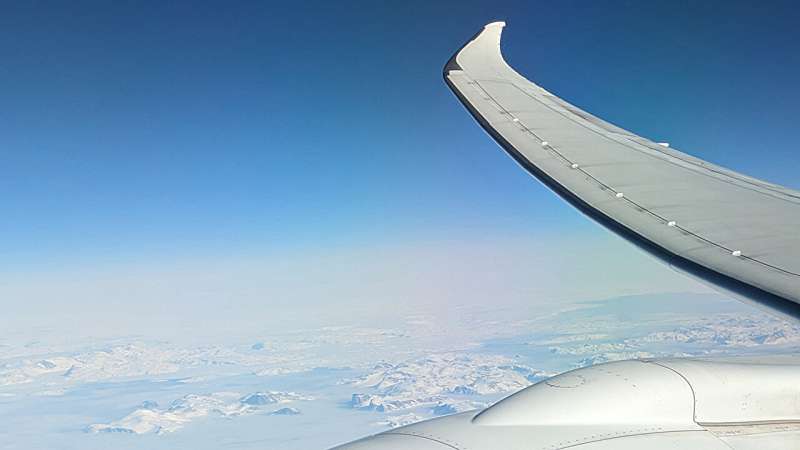This article has been reviewed according to Science X's editorial process and policies. Editors have highlighted the following attributes while ensuring the content's credibility:
fact-checked
peer-reviewed publication
trusted source
proofread
Spillover of tropospheric ozone is affecting measurements of stratospheric ozone recovery more than previously realized

In the final decades of the 20th century, stratospheric ozone depletion—often called, not quite accurately, the ozone hole—was a widespread concern. Halocarbons, including chlorofluorocarbons used as coolants in refrigerators and aerosol spray cans, were linked, beginning in the mid-1970s, to a severely thinning ozone layer. However, global efforts to reduce halocarbon use have since led to a slow but steady recovery of the stratospheric ozone layer.
About 90% of Earth's ozone is in the stratosphere, where it protects humans, plants, and animals from the sun's most damaging ultraviolet rays.
Ozone is also a highly reactive gas, though, and the 10% of it that is in the troposphere—the atmospheric layer between Earth's surface and the stratosphere—can be damaging to human health and the environment. Tropospheric ozone is the primary component of smog, for example, and its concentration has been increasing globally over the past hundred years.
Ozone molecules form in the lower atmosphere when pollutants—such as volatile organic compounds and nitrogen oxides—chemically react in sunlight.
But, as Prather writes in a new paper appearing in AGU Advances , "what happens in the troposphere doesn't stay in the troposphere." Some of these molecules travel up into the stratosphere when the two atmospheric layers exchange air.
The author suggests that this upward migration of ozone may make it difficult to assess the recovery rate of the depleted stratospheric ozone layer accurately and may also affect how researchers interpret the results of a worldwide reduction in halocarbon use.
Using a chemistry transport model, he examined spillover rates of ozone moving from the troposphere into the stratosphere. He found that about 20% of the observed stratospheric ozone recovery may be attributable to increasing levels of tropospheric ozone.
Although this ozone transfer has been accounted for in whole-atmosphere model predictions of ozone trends, the author suggests that its role is larger than scientists have accounted for in assessments of stratospheric ozone recovery and that future studies of ozone depletion should be adjusted accordingly.
A global reduction in air pollution would reduce tropospheric ozone levels and improve air quality—but it would also reduce stratospheric ozone.
More information: Michael J. Prather, The Spillover of Tropospheric Ozone Increases Has Hidden the Extent of Stratospheric Ozone Depletion by Halogens, AGU Advances (2024). DOI: 10.1029/2023AV001154
Journal information: AGU Advances
Provided by American Geophysical Union
This story is republished courtesy of Eos, hosted by the American Geophysical Union. Read the original storyhere.




















